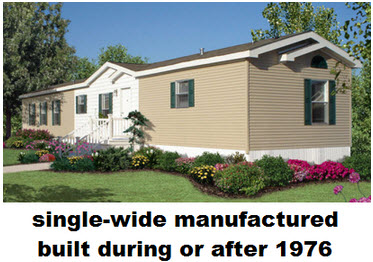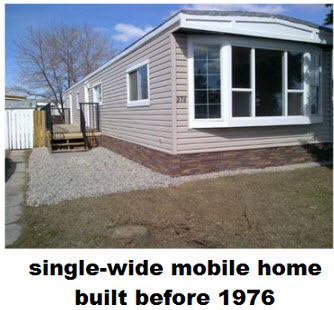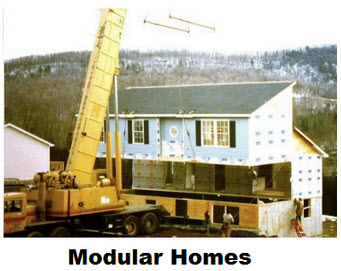
At first glance mobile homes, manufactured homes, and modular homes appear to look alike however there are both subtle and obvious differences inside and out between these 3 kinds of homes that investors should be very aware of. Whether you are looking to move into a new home of your own or are ready to invest in your next cash-flowing property the below information will help shed light on the homes similarities and differences.
1. Mobile Homes
Mobile home is the term used for manufactured homes produced prior to June 15, 1976 when the HUD new safety code went into effect. Mobile homes are prefabricated homes that are largely constructed in factories then transported to a site where it will reside temporarily or permanently. Mobile homes may be located inside a mobile home park or on private land. These homes have steel I-beams which run along the underside of the homes. These I-beams may rest atop concrete blocks, wooden pillars, metal stands, or a permanent concrete foundation for it’s stability.

2. Manufactured homes
Manufactured homes are mobile homes built in 1976 or after. These homes are under federal building codes administered by the U.S. Department of Housing and Urban Development (HUD). Like mobile homes, manufactured homes are built and transported by flat bed trucks in 10 to 16 foot sections and joined at the site where they will reside temporarily or permanently. After the manufactured homes are connected to power and utilities a local code inspector must review and inspect only those utility connections and not the building structure itself. Mobile homes and manufactured home loans may be guaranteed under FHA guidelines however are difficult to obtain based on the home, location, down payment, and applicant’s history. These loans are typically 20 years or less in length.
3. Modular homes
Modular homes are the pinnacle of factory-made housing. Unlike mobile homes and manufactured homes, modular homes are built to the same standards as traditionally built single family homes but without the time or physical energy needed to build a traditional home from scratch on-site. Construction time and costs can be drastically reduced by as much as 50% compared to traditionally built homes because modular homes built in factories need not worry about material damages or work stoppage due to rain, wind, or snow. Modular homes are built to such standards that when these homes are shipped from the factory on flatbed trucks and joined a local code inspectors must inspect and approve of all utility connections and building codes in and outside of the home.
Things to remember:
1. Modular homes can look indistinguishable from traditional frame built homes once it is completely attached. Modular homes can be multi-stories high. All modular homes rest on a solid slab foundation once complete.
2. Manufactured homes are mobile homes 2.0. They are built to higher construction standards than their predecessors built prior to 1976. These homes are typically joined and installed on a permanent concrete foundation or movable block pillars.
3. Mobile homes are closer to the original movable home. Like manufactured homes, two, three, or more single units can be joined to create double-wides, triple-wides, or ________-wide homes.
4. Every property is different from situation to situation. Homes only a few years old may be more rundown and depressed than homes 30 years old. Like anything else it is all about how it is cared for and maintained over the years.
Love what you do daily,
John Fedro
support@mobilehomeinvesting.net

















2 Comments
DB
December 23, 2013Thank you for explaining the differences between mobile homes, manufactured homes and modular homes. I often wondered why different terms were used for these homes and how they applied. Very good and useful information.
John Fedro
December 24, 2013Hi DB,
Happy to help you. If you have any further followup questions do not hesitate to ask.
Talk soon,
John Fedro